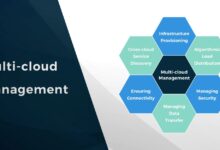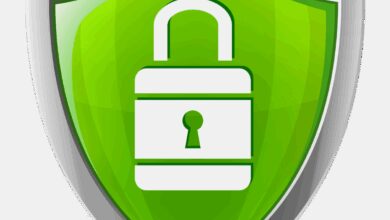Cloud performance monitoring: Mastering Cloud Performance Monitoring: 7 Essential Strategies
Unlock peak cloud efficiency! Dive into essential strategies for robust cloud performance monitoring, ensuring seamless operations and optimal resource utilization. Stay ahead of the curve.
The Imperative of Cloud Performance Monitoring

In today’s digitally-driven landscape, businesses are increasingly migrating their infrastructure and applications to the cloud. This shift offers unparalleled scalability, flexibility, and cost-efficiency. However, it also introduces a new set of challenges, particularly around maintaining optimal performance. Without effective cloud performance monitoring, organizations risk experiencing downtime, slow application response times, security vulnerabilities, and ultimately, dissatisfied customers. This section will delve into why robust monitoring is not just a best practice, but a critical necessity for any organization leveraging cloud services.
Understanding Cloud Performance Metrics
Before diving into monitoring tools and strategies, it’s crucial to understand what metrics truly matter. These metrics provide the foundational data upon which performance can be assessed and improved. They can be broadly categorized:
Availability: This refers to the uptime of your cloud services and applications.Key metrics include Mean Time Between Failures (MTBF) and Mean Time To Recover (MTTR).High availability ensures that your services are consistently accessible to users.Latency: This measures the time it takes for data to travel from its source to its destination.In cloud environments, high latency can significantly degrade user experience, especially for interactive applications.Metrics include round-trip time (RTT) and network latency.Throughput: This indicates the amount of data or number of transactions processed over a given period..
High throughput is essential for applications handling large volumes of data or traffic.Metrics include requests per second, transactions per minute, and bandwidth utilization.Resource Utilization: This involves monitoring the consumption of key cloud resources such as CPU, memory, storage, and network bandwidth.Over-utilization can lead to performance bottlenecks, while under-utilization represents wasted expenditure.Error Rates: Tracking the frequency of errors in application logs, API calls, and transaction failures is vital for identifying underlying issues that impact performance and user experience.The Business Impact of Poor Cloud PerformanceThe consequences of neglecting cloud performance can be severe and far-reaching.It’s not just about technical glitches; it’s about the bottom line.Consider these impacts:.
cloud performance monitoring – Cloud performance monitoring menjadi aspek penting yang dibahas di sini.
Revenue Loss: Downtime directly translates to lost sales, missed opportunities, and reduced customer engagement.Studies have shown that even a few minutes of downtime can cost businesses thousands, if not millions, of dollars.Damaged Reputation: A consistently slow or unavailable service erodes customer trust and loyalty.Negative reviews and word-of-mouth can quickly tarnish a brand’s reputation, making it difficult to attract new customers.Reduced Productivity: For internal applications, poor performance can cripple employee productivity, leading to frustration and delays in critical business processes.Increased Operational Costs: Inefficient resource utilization, often a symptom of poor monitoring, leads to unnecessary cloud spending.Furthermore, reactive troubleshooting after an incident is often more expensive than proactive monitoring and prevention.Security Risks: Performance anomalies can sometimes be indicators of security breaches or attacks.Without proper monitoring, these threats might go unnoticed, leading to data loss or compromise.The Evolution of Cloud Performance Monitoring ToolsThe landscape of cloud performance monitoring has evolved dramatically.
.Early solutions were often siloed and focused on individual components.Today, comprehensive platforms offer integrated visibility across multi-cloud and hybrid environments.These tools leverage advanced analytics, machine learning, and AI to provide deeper insights and automate responses.The evolution has been driven by the increasing complexity of cloud architectures, the rise of microservices, containers, and serverless computing, all of which demand more sophisticated monitoring capabilities..
Key Components of a Robust Cloud Performance Monitoring Strategy
A comprehensive strategy goes beyond simply deploying a tool. It involves a holistic approach that integrates people, processes, and technology. This section outlines the fundamental pillars upon which an effective cloud performance monitoring strategy is built.
1. Establishing Clear Performance Baselines
Before you can identify deviations from normal, you need to know what ‘normal’ looks like. Establishing performance baselines is the cornerstone of effective monitoring. This involves collecting data over a period of time during normal operating conditions to understand typical performance levels for your applications and infrastructure.
Define Key Performance Indicators (KPIs): Identify the most critical metrics for your specific applications and business goals.These should align with the metrics discussed earlier (availability, latency, throughput, resource utilization, error rates).Collect Historical Data: Gather data for these KPIs over an extended period, including peak and off-peak times, to capture a representative picture of performance.Analyze Trends: Look for patterns and trends in the historical data.This helps in understanding seasonal variations, growth trajectories, and potential future bottlenecks.Set Thresholds: Based on the established baselines and business requirements, define acceptable thresholds for each KPI.These thresholds will trigger alerts when performance deviates significantly.2.
cloud performance monitoring – Cloud performance monitoring menjadi aspek penting yang dibahas di sini.
.Implementing Comprehensive Visibility and ObservabilityVisibility refers to the ability to see what’s happening within your cloud environment.Observability takes this a step further by enabling you to understand *why* it’s happening.This is particularly crucial in complex, distributed cloud systems..
End-to-End Monitoring: Ensure your monitoring covers the entire user journey, from the end-user device to the application backend and underlying infrastructure.This includes front-end performance, network performance, application performance, and infrastructure performance.Distributed Tracing: In microservices architectures, requests often traverse multiple services.Distributed tracing allows you to follow a single request across these services, pinpointing latency or errors within specific components.Tools like OpenTelemetry are instrumental here.Log Aggregation and Analysis: Centralizing logs from all your cloud resources and applications simplifies troubleshooting.
.Advanced log analysis tools can identify patterns, anomalies, and error correlations that might be missed otherwise.Real User Monitoring (RUM): RUM captures the actual experience of your end-users, providing insights into how different geographies, devices, and network conditions affect performance.Synthetic Monitoring: This involves simulating user interactions with your applications from various locations to proactively identify performance issues before they impact real users.3.Leveraging Automated Alerting and Incident ResponseMonitoring is only effective if it leads to action.Automated alerting ensures that the right people are notified immediately when performance issues arise, and well-defined incident response procedures minimize downtime..
Intelligent Alerting: Avoid alert fatigue by configuring alerts based on meaningful deviations from baselines and predefined thresholds.Use multi-level alerting (e.g., warning, critical) to prioritize issues.Contextual Alerts: Alerts should provide sufficient context, including the affected service, the specific metric that triggered the alert, and relevant logs or traces, to enable rapid diagnosis.Automated Remediation: For common issues, consider implementing automated remediation actions..
This could include auto-scaling resources, restarting services, or rerouting traffic.Runbooks and Playbooks: Develop detailed runbooks or playbooks that outline step-by-step procedures for handling specific types of incidents.This ensures consistency and efficiency in incident response.Post-Mortem Analysis: After an incident is resolved, conduct a thorough post-mortem analysis to identify the root cause, document lessons learned, and update monitoring and response procedures to prevent recurrence.Advanced Techniques for Optimizing Cloud PerformanceBeyond the fundamental strategies, several advanced techniques can further enhance your cloud performance monitoring capabilities and drive continuous optimization..
cloud performance monitoring – Cloud performance monitoring menjadi aspek penting yang dibahas di sini.
4. Utilizing AI and Machine Learning for Predictive Analytics
The sheer volume and complexity of data generated in cloud environments make manual analysis increasingly impractical. AI and ML offer powerful capabilities for predictive analytics, anomaly detection, and root cause analysis.
Anomaly Detection: ML algorithms can learn normal behavior patterns and automatically flag unusual deviations that might indicate emerging problems, even before they cross predefined thresholds.Predictive Forecasting: By analyzing historical trends and current resource utilization, ML can predict future resource needs, helping organizations to proactively scale and avoid performance degradation during peak loads.Automated Root Cause Analysis: AI can correlate events across different monitoring tools and data sources to automatically identify the most likely root cause of a performance issue, significantly reducing troubleshooting time.Performance Optimization Recommendations: Some advanced tools leverage ML to provide actionable recommendations for optimizing resource allocation, configuration settings, and application code based on observed performance patterns.5.Integrating Security Monitoring with Performance MonitoringSecurity and performance are intrinsically linked.
.Security threats can directly impact performance, and performance anomalies can sometimes be early indicators of security breaches..
Correlating Security Events with Performance Data: Monitor for security events (e.g., unusual login attempts, port scanning, malware alerts) and correlate them with performance metrics.A sudden spike in network traffic or CPU usage alongside a security alert might indicate a denial-of-service (DoS) attack.Monitoring for Performance-Related Vulnerabilities: Certain configurations or code vulnerabilities can lead to performance issues under specific conditions.Monitoring tools can help identify these by observing how the system behaves under load.Ensuring Compliance: Many compliance standards require robust monitoring and logging..
Integrating security monitoring with performance monitoring helps ensure that all relevant activities are tracked and auditable.Threat Detection through Performance Anomalies: Unusual patterns in latency, throughput, or error rates can sometimes be indicative of sophisticated attacks like cryptojacking or data exfiltration, which might not be immediately obvious through traditional security tools.6.Embracing a DevOps and SRE CultureEffective cloud performance monitoring is not solely the responsibility of an IT operations team.It requires a cultural shift towards collaboration, shared responsibility, and a focus on continuous improvement, often embodied by DevOps and Site Reliability Engineering (SRE) principles..
cloud performance monitoring – Cloud performance monitoring menjadi aspek penting yang dibahas di sini.
Collaboration Between Dev and Ops: Developers should be involved in understanding performance requirements and using monitoring data to debug and optimize their code.Operations teams should provide insights into production behavior.Infrastructure as Code (IaC) and Monitoring as Code: Treat your monitoring configurations and alerts as code.This allows for version control, automated deployment, and easier management, ensuring consistency across environments.Service Level Objectives (SLOs) and Service Level Indicators (SLIs): SRE teams define SLOs (e.g., 99.9% availability) and SLIs (the metrics used to measure SLOs)..
Monitoring is crucial for tracking these and ensuring targets are met.Blameless Post-Mortems: Foster an environment where failures are seen as learning opportunities.Blameless post-mortems focus on identifying systemic issues rather than blaming individuals, encouraging open discussion and proactive solutions.Continuous Feedback Loops: Establish clear feedback loops where performance data informs development priorities, infrastructure decisions, and operational processes.Choosing the Right Cloud Performance Monitoring ToolsThe market is flooded with tools, each offering different features and catering to various needs.Selecting the right ones is crucial for successful implementation..
7. Evaluating and Selecting Appropriate Tools
The choice of tools depends heavily on your specific cloud environment (AWS, Azure, GCP, multi-cloud, hybrid), application architecture, budget, and technical expertise.
Cloud-Native Tools: Cloud providers offer their own monitoring services (e.g., AWS CloudWatch, Azure Monitor, Google Cloud Operations Suite).These are often well-integrated with their respective platforms but might be less comprehensive for multi-cloud environments.Third-Party APM (Application Performance Monitoring) Tools: Solutions like Datadog, Dynatrace, New Relic, and AppDynamics offer deep visibility into application performance, often across multiple clouds and on-premises environments.They typically provide features like distributed tracing, RUM, and advanced analytics.Infrastructure Monitoring Tools: Tools like Zabbix, Nagios, and Prometheus focus on monitoring the underlying infrastructure components (servers, networks, databases).Log Management Tools: Solutions like Splunk, ELK Stack (Elasticsearch, Logstash, Kibana), and Sumo Logic are essential for centralizing and analyzing logs.Open-Source vs.Commercial: Open-source tools offer flexibility and cost savings but often require more in-house expertise for setup and maintenance.
.Commercial tools typically provide more features, better support, and easier integration.Key Evaluation Criteria: When evaluating tools, consider ease of integration, breadth of coverage, depth of insights, scalability, alerting capabilities, reporting features, user interface, cost, and vendor support.A Proof of Concept (PoC) is highly recommended before making a significant investment.The journey to mastering cloud performance monitoring is ongoing.By implementing a robust strategy, leveraging advanced techniques, fostering a collaborative culture, and selecting the right tools, organizations can ensure their cloud environments operate at peak efficiency, delivering exceptional experiences to their users and driving business success..
cloud performance monitoring – Cloud performance monitoring menjadi aspek penting yang dibahas di sini.
Frequently Asked Questions (FAQ)
What is the primary goal of cloud performance monitoring?
The primary goal is to ensure that cloud-based applications and infrastructure are operating optimally, reliably, and efficiently. This involves tracking key metrics to detect and resolve issues proactively, maintain high availability, and provide a seamless user experience.
How often should cloud performance be monitored?
Ideally, cloud performance should be monitored continuously, 24/7. Modern monitoring tools provide real-time data, allowing for immediate detection of anomalies and rapid response to incidents. However, the frequency of analysis and reporting might vary based on business needs and the criticality of the monitored services.
What are the main challenges in cloud performance monitoring?
cloud performance monitoring – Cloud performance monitoring menjadi aspek penting yang dibahas di sini.
Key challenges include the dynamic and ephemeral nature of cloud resources, the complexity of distributed systems (like microservices), managing visibility across multi-cloud or hybrid environments, avoiding alert fatigue, and ensuring adequate security integration. The sheer volume of data generated also presents a significant challenge.
Can cloud performance monitoring help reduce costs?
Yes, absolutely. By identifying underutilized resources, optimizing configurations, and preventing costly downtime or performance degradations, effective cloud performance monitoring can lead to significant cost savings. It helps in right-sizing resources and avoiding over-provisioning.
cloud performance monitoring – Cloud performance monitoring menjadi aspek penting yang dibahas di sini.
Recommended for you 👇
Further Reading:









